| The youngest students were showing off their knowledge of traditional foods – note the roasted cuy! |
| This young class had stations demonstrating the five senses. |
These students were showing off their knitting skills. Handicrafts such as these are important in the traditional and Indigenous cultures as beautiful shawls, hats, blouses, and skirts are often handmade or bordered with hand stitched decorations. Since there are many jobs in this sector, honing these skills are important for job opportunities in the future as well.
Painting and art is also honored in many ways in this country. Art is everywhere in churches, museums, street murals and graffitied (sometimes beautifully done) all over the sides of buildings. I haven’t seen a lot of specific art classes, but it is obvious that art, music, and using the right side of the brain, is an important part of Ecuadorian society.
This grade level studied plants in their science classes and were demonstrating the life cycle and importance of plants. They were also giving away some handmade felt flowers to participants of their game.
| These students were demonstrating some principals communities and of physics with their cardboard cities.
|
| Many classes challenged younger students with math games. This student used his knowledge of circuits to make a fun multiplication game. |
  |
| These students showed off their abilities in the Chemistry Lab |
In a previous post, I have discussed the lack of teaching resources in this country. However, as I am learning, that doesn’t mean that Ecuador is completely without. One just has to become very creative in reusing and repurposing the items they do have. I really enjoyed watching these 5th grade and 9th grade students show off their ideas for products made from recycled objects. I think we all could learn a lot from their creativity!
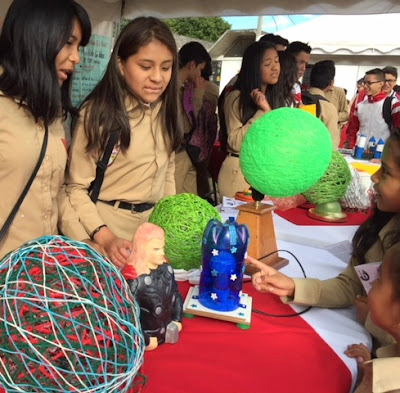  |
| Lamps made from recycled or repurposed goods |
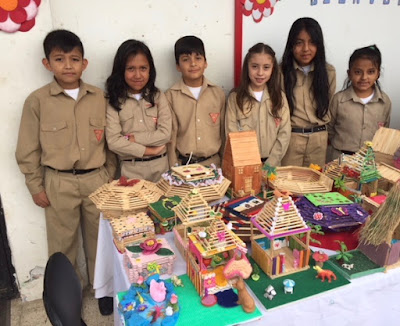  |
| Popsicle stick doll houses |
| Jewelry Boxes made from….. toilet paper rolls! |
| I see toilet paper rolls, egg cartons, plastic bottles, bottle caps…. |
| The blue serving cups…entirely out of plastic bottle bottoms |
| Have a tire, and some foam? You can make a chair! |
| How about we use all those plastic bottles in the world to make garbage cans for our cities! |
| Plastic bottles make great plant pots, too! |
| This student figured out how to repurpose newspaper! |
| Look closely…. these students repurposed metal oil drums into this stylish furniture. |
When I walked into the gymnasium, I was really surprised. The older students were tasked with creating products and marketing material to promote their creations. Here is a small sample of some of their products:
| These students were so proud of their graphic novel which they had written, illustrated and published into a professional book. |
| These girls created a line of perfumes. |
| These students created chocolate of various flavors. I also saw many other projects inventing cupcakes, marmalades, and fruity drinks. |
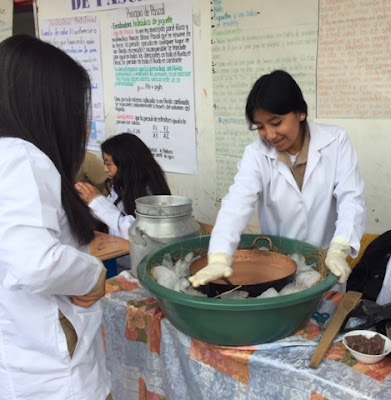  |
| These students were showing off the traditional way to make ice cream in a paila, adding their own unique flavors. |
| These students demonstrated a ceremonial dance and song at a traditional wedding of the Otavalo people. |
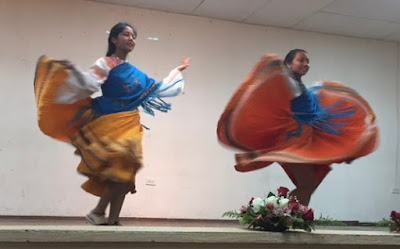  |
| These students performed a traditional dance of the people of Zuleta |
| These students demonstrated a traditional dance called “San Juanito”, of the people of Carabuela |
| These students performed a traditional dance called the “Bomba” |
I asked one of the students how they knew all of these songs and dances from different cultures. She told me that they have been learning them in school, and dancing them in the community, since they were very little. Later that day, I witnessed the preschoolers showing off their first steps of these traditional dances.


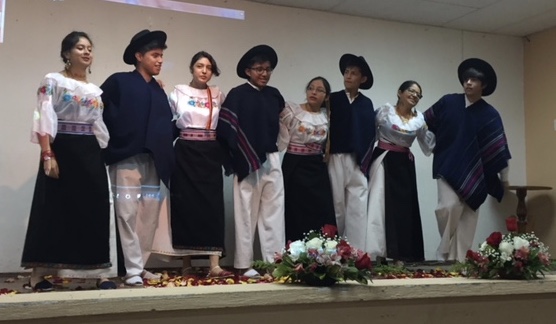
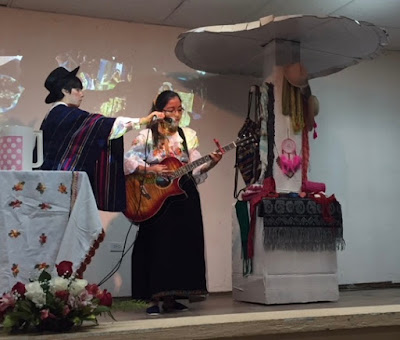
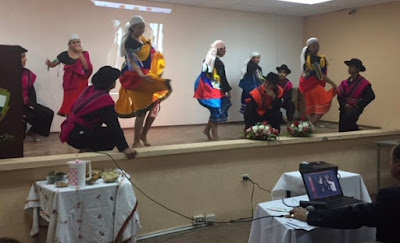


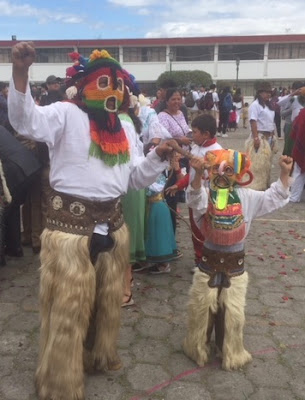
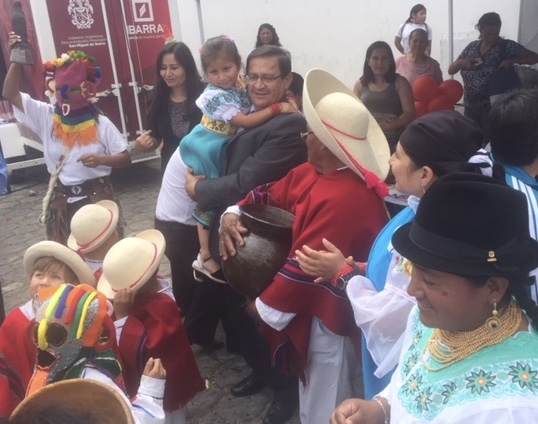



Rockford Mel
Wow, Becky! Every post you send out is fantastic! I'm moved each time. Thank you for thoughtfully sharing your experiences. ♥
Lou
Fascinating! Thank you for sharing your travel stories and experiences! Hugs!!!
Lyssa
Hi Becky, WOW! Thank you for chronicling this exhibition in such detail for us to experience! I'm blown away and so inspired by the creativity and resourcefulness of these kids. I particularly love the toilet paper roll jewelry boxes, newspaper ensemble, plastic bottle planter pots, and popsicle stick doll houses! So fun! : ) Lyssa